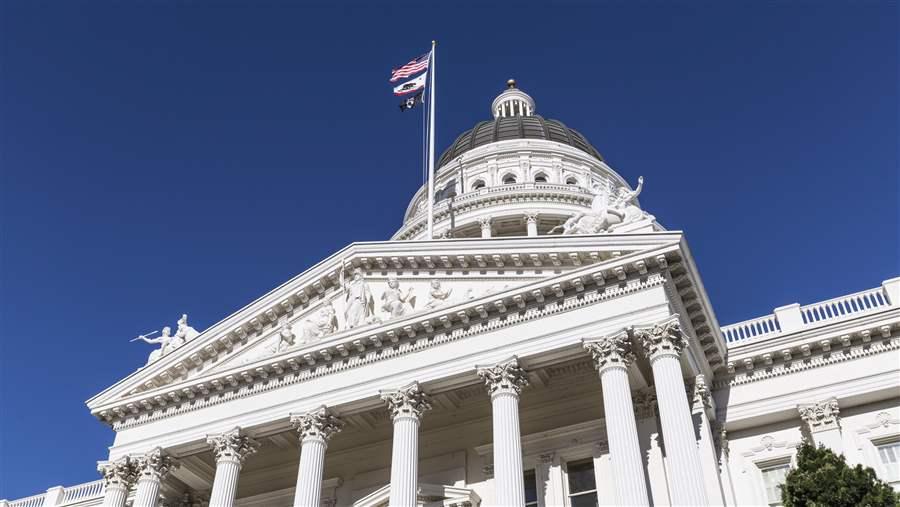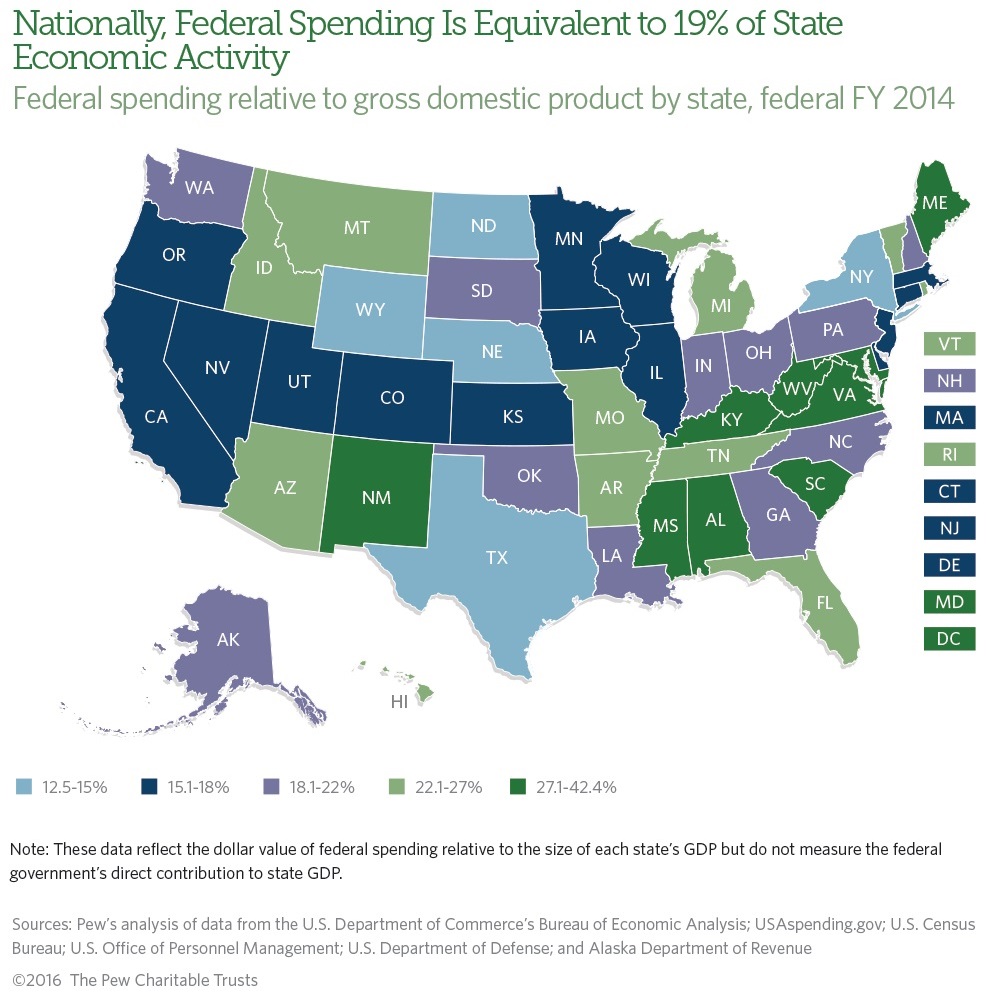How Closely Are State Economies Tied to Federal Spending?
The importance of federal funds varies by state and expenditure category
 Shutterstock
ShutterstockFederal spending affects economic activity in every state.
Note: This analysis was corrected on March 23, 2016, to change "billion" to "trillion" in the first sentence.
Of the $3.5 trillion spent by the federal government in fiscal year 2014, 93 percent was spent in the states.1 These dollars pay for Social Security, Medicaid, the salaries of federal employees, and other expenditures. When policymakers in Washington decide where to direct federal money, they should bear in mind the effects that changes in federal spending have on state economies—and how those impacts differ from state to state.
According to a new fiscal analysis from The Pew Charitable Trusts, federal spending plays a significant role in every state, and in federal fiscal 2014 was equivalent to 19 percent of state economic activity—also known as gross domestic product (GDP). Although comparing total federal spending with GDP is a useful yardstick for evaluating federal spending across states, it does not measure how much total federal expenditures directly contribute to each state’s economy. Instead, it illustrates the relative importance of federal spending to economic activity in a state and across states.
Federal spending was equivalent to approximately one-fifth of state economic activity nationally in fiscal 2014, but on a state-by-state basis the figure ranged from 32.9 percent in Mississippi to 12.5 percent in Wyoming. Federal spending in the District of Columbia was 42.4 percent, higher than in any state.

In general, the federal government spends money in the states in five major areas:
- Retirement benefits, including Social Security and federal employee pensions, accounted for over one-third of total spending. Social Security is the largest expenditure in this category, accounting for about four-fifths of these payments.
- Nonretirement benefits, the largest of which is Medicare, made up more than one-quarter of spending. Medicare alone makes up nearly two-thirds of these payments.
- Grants, the largest of which is Medicaid, accounted for roughly one-sixth of spending. Medicaid grants to states comprise about half of all federal grants.
- Contracts for purchases of goods and services made up roughly one-ninth of spending. Defense purchases accounted for two-thirds of federal contracts.
- Salaries and wages for federal employees accounted for 9 percent of spending, the smallest share. Roughly two-thirds of this spending is for civilians, and one-third is for military personnel.
Related chart: Federal grant trends by program area
From state to state, spending differs across these categories. Multiple factors account for this variation, including differences in demographics, types of industry across states, and the decisions that state and local governments make about which public services to provide and at what levels. Because each state’s economy is unique, the mix of federal spending and the impact of a given federal budget change will vary.
For instance, in Alabama and Virginia, total federal spending was equivalent to about 30 percent of state GDP in federal fiscal 2014, but spending on salaries and wages for federal employees was equivalent to 5.5 percent of Virginia’s economic activity, compared with just 2.7 percent in Alabama. Consequently, Virginia’s economy would probably be more affected than Alabama’s by federal salary and wage cuts.
This analysis illustrates how connected state economies are to federal budget and policy decisions. As federal policymakers work on a budget for the next fiscal year, they should remember the significant impact their spending decisions could have on state budgets.
See more maps, charts on how federal and state finances intersect.
Anne Stauffer directs and Justin Theal is a senior associate for Pew’s research on fiscal federalism.
Endnotes
- The remaining 7 percent includes interest payments on the federal debt, international transactions and foreign payments, classified expenditures, and other spending that cannot be assigned to a state.






